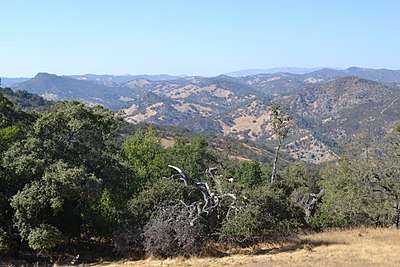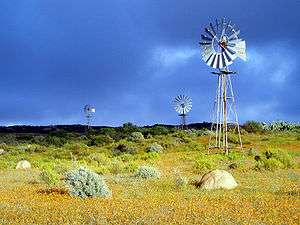Mediterranean climates
Mediterranean climates can be found in several locations around the world outside of the Mediterranean; they usually have hot, dry summers and mild winters, providing tourist destinations for those who live in colder climates.
Understand

Mediterranean climates are a mixture of desert and temperate climates. They're often found 30 to 40 degrees away from the equator, with the Mediterranean climates closest to the equator being more desertlike and Mediterranean climates farther away from the equator being more temperate. In some ways, the Mediterranean climate is the optimal climate; it's not as hot as the desert in summer but not as cold as the temperate regions in winter, and it's not as dry as a desert but also not as wet as a temperate climate. This provides a lot of good opportunities for outdoor life and, therefore, hiking.
Most of the rain in Mediterranean climates comes during the winter, with the first rainy days around October (Northern Hemisphere; April would be the Southern Hemisphere equivalent) and the final rainy days in the spring (often early spring).
There aren't many days of complete cloud cover during summer in Mediterranean climates, and even in winter the sun gets quite high and the days are fairly long (due to latitude). There are mostly quite large gaps in temperature between day and night.
Mediterranean climates can be found around the Mediterranean Sea, particularly to the north of it in Southern Europe. However, there are other places with Mediterranean climates; for example, parts of California and South Africa have Mediterranean climates.
Typical weather conditions
Weather to expect in regions with Mediterranean climates varies significantly depending on the time of year. Generally, though, Mediterranean climates do not have such distinct seasons as most temperate regions have, and therefore there are only a few possibilities that can be expected:
- Summer: daily temperatures typically reach highs around 90 °F (32 °C); however, cool ocean breezes may lower temperatures significantly during the night. When heat waves strike, temperatures may be elevated by as much as 20 degrees Fahrenheit. Rain is greatly unlikely, and completely blue skies like in the pictures displayed are common.
- Spring/Fall (Autumn): temperatures are milder than during the summer, but generally the weather is sunny. Most travelers will like this time of year the most for going outdoors and hiking or cycling; however, some years there is not a gradual transition from summer to winter; instead, temperatures go from being hot to cold within a day or so.
- Winter: winter weather can be a little unpleasant some years, due to cold breezes; in particular, in Northern California. Heavy rainstorms may come during this period, but when they come, they come over a few days and only strike a few days a year. In mountainous regions, there may be snow.
Destinations
Around the Mediterranean Sea
If there's anywhere to first visit for a Mediterranean climate, it's the region around the Mediterranean Sea. It stretches along the northern and eastern sides of the Mediterranean Sea, across to Italy and Greece, and then to Turkey and Israel. On the southern, African side of the Mediterranean, the land is drier and mostly is desert. The climate of the Mediterranean is largely what makes it such a popular tourist destination.
California
This state is known for the warm, dry palm trees in the Los Angeles area, but California's second-largest urban area (the Bay Area) and the countryside surrounding it, and stretching south between the coastline and the Central Valley to Santa Barbara has a Mediterranean climate. There are plenty of grass-covered hills and valleys, along with higher peaks scattered here and there, especially in the Diablo Range — peaks include Mount Diablo and Mount Hamilton.
California's Mediterranean climate is often found just an hour's drive inland, where heavy (in comparative terms) rains come in the winter, especially during El Niño years, but extremely dry summers follow. In spring, the hills and mountains throughout this region are green and covered in wetter places and some sides of hills with oaks and pines; in summer, the hills turn gold because the grass turns yellow. However, in some places like the Altamont Hills, the hills have no trees, and often the grass burns in fires, especially along the sides of major roads.
South Africa
See
The plentiful sunny days provide good opportunities for sightseeing, and while Mediterranean climate regions don't hold the most dramatic scenery on Earth, they have attractive mixtures of vegetation and terrain that are in contrast to thick forests and deserts found throughout much of the world.
While the Mediterranean has taken advantage of its Mediterranean climate for tourism, California hasn't intentionally promoted its climate and vegetation so much for tourists. An exception is Napa Valley's wine country, where there are miles of vineyards that can survive due to the Mediterranean climate.
Flora
Many Mediterranean climate regions are grasslands with woodlands in wetter locations, like on some mountains and alongside creeks. (Since Mediterranean climates get almost all of their rain in winter, streams are rarely year-round). Trees that grow in Mediterranean climates include eucalyptus trees and oaks; however, the oak trees are small. You can also find shrubs in Mediterranean climates, called chaparral, especially on the sides of large ridges and mountains.
Do
The good climate of the region makes it good for hiking and recreational cycling in rural areas and, in coastal areas, good for spending time on the beach. Mostly, you don't have to worry about rain spoiling your day, but if rain does come, get prepared for a lot of it.
Regions with Mediterranean climates are also good for taking photographs because it's sunny most of the time.
